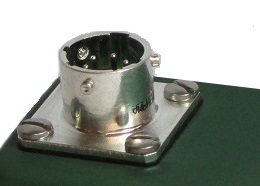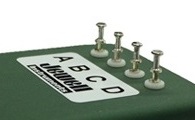Connectors and pin terminals are common and dependable connections that relay your readings from within the sensor to the screen in front of you. These two options each have advantages and limitations and deciding which is better for your application depends on some factors.
Connector
Benefits
A connector is the better option when you need to implement your sensor in a dynamic environment such as bridge or dam monitoring. It will be exposed to plenty of weather, temperature, and vibration so you’ll need some extra security. Plugging a cable into a connector is quick and easy. It shields the connection from harsh conditions and reduces strain on the cable, particularly when the cable must be run over a long distance.
A connector is also more versatile. For instance, some sensors include a DB-9 connector, which provides power and point-to-point communication between two devices.
Limitations
Connectors can be worn out if they are continuously disconnected. In “set it and forget it” applications such as OEM or geotechnical monitoring, this is a plus. A connector takes up more space so if you’re monitoring a bridge, this probably isn’t a concern, but for OEM, this could be a problem. Finally, the mating connector is not included with every sensor you purchase causing an additional expense.
Pin
Benefits
Pin terminals are a good idea if you’re on a budget and need to save space in your design. No additional materials are needed other than the mating connector and the sensor naturally has smaller dimensions.
Limitations
The trade-off is more maintenance and setup. Pin terminals are left exposed creating a greater possibility for the pins to break and contacts to become soiled or oxidized. The pins can also be susceptible to the disconnection that can potentially damage the sensor. This is no problem for OEM applications since the sensor is concealed within an enclosure, but for geotechnical monitoring, you’ll need a connector.
To Conclude…
The connector versions have been the more popular and sturdier choice for a variety of applications. For smaller budgets and designs that protect the unit, pin terminals are the better choice. Jewell offers pin and connector options on most of its forced balance accelerometers and inclinometers and other models include wire connections.


